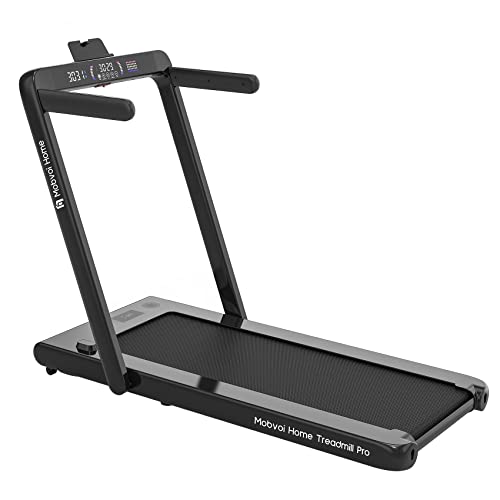What Is The Reason Walking Machine Is The Right Choice For You?

The Walking Machine: A Comprehensive Guide to Your Fitness Companion
In today's hectic world, where time is a high-end, preserving a constant workout regimen can be a challenge. For lots of, a walking machine-- frequently referred to as a treadmill-- works as an ideal fitness companion. This short article supplies an extensive look at walking machines, including their benefits, types, upkeep tips, and frequently asked questions.
Why Choose a Walking Machine?
Walking machines offer a useful and efficient way to integrate cardiovascular workout into everyday life. Here are several key advantages:
- Convenience: Walking machines permit people to exercise anytime, despite weather or time restraints. They are perfect for hectic schedules.
- Versatility: Users can stroll, jog, or run at their own speed and strength.
- Safety: Walking machines present a lower risk of injury compared to outside walking or running, specifically for novices or those recuperating from injuries.
- Tracking Progress: Many treadmills included integrated monitors that track metrics like speed, range, and calories burned.
Types of Walking Machines
When thinking about a walking machine, it's necessary to pick the best type based on specific physical fitness objectives and space restrictions. Below are the main kinds of walking machines:
| Type | Description |
|---|---|
| Handbook Treadmills | These machines do not have a motor, and users require to stroll or run to turn the belt. |
| Electric Treadmills | Powered by an electric motor, enabling users to set the speed and incline effortlessly. |
| Folding Treadmills | Designed for simple storage, these treadmills can be folded up when not in usage. |
| Desk Treadmills | Ideal for a double work and workout environment, these compact machines permit walking while working. |
| Slope Trainers | These enable users to simulate uphill walking, boosting workout strength and calorie burn. |
Choosing the Right Walking Machine
Picking the ideal walking machine can considerably affect motivation and efficiency. Here are some factors to think about:
Key Features to Look For
- Motor Power: A powerful motor makes sure a smooth and constant workout. For occasional walkers, a 1.5 HP motor is normally enough; for much heavier usage, try to find 3.0 HP and above.
- Belt Size: A broader and longer belt provides more area for a comfy stride. Requirement sizes vary from 16 inches broad and 50 inches long.
- Incline Options: Adjustable slope settings can simulate walking or running uphill, increasing the strength of the exercise.
- Shock Absorption: Good shock absorption lowers the threat of joint injuries and boosts convenience.
- Console Features: Look for integrated workouts, heart rate displays, and connectivity functions like Bluetooth for a more appealing experience.
Budget plan Considerations
Walking machines come in a large variety of rates, depending on features and building quality. Here's a rough budget plan breakdown:
| Price Range | Features |
|---|---|
| Under ₤ 300 | Fundamental manual or little electric treadmills with minimal features. |
| ₤ 300 - ₤ 700 | Advanced electric treadmills with slope, medium power motors, and better warranties. |
| ₤ 700 - ₤ 1500 | Premium electric treadmills with bigger integrated display screens, substantial features, and service warranties. |
| ₤ 1500 and above | High-end models offering sophisticated technology, features, and durable construction for major physical fitness lovers. |
Maintenance Tips for Your Walking Machine
To make sure longevity and ideal performance of a walking machine, consider the following upkeep ideas:
- Regular Cleaning: Dust and sweat can build up on the machine and the belt. Wipe down the surface areas and clean the belt regularly.
- Lubrication: Depending on the model, oiling the running belt periodically can avoid wear and tear. Inspect the maker standards for suggested lubrication schedules.
- Inspection: Periodically inspect the machine for loose screws or worn parts. Tighten up and replace as required.
- Calibration: Occasionally, check the calibration of your machine's metrics to ensure they supply precise data.
- Proper Use: Follow the manufacturer's recommendations for weight limits and functional guidelines.
Frequently Asked Questions About Walking Machines
1. Are walking machines a great workout?
Yes, walking machines offer an excellent cardiovascular exercise, can assist with weight loss, and improve total health.
2. How frequently should I use a walking machine?
Aim for a minimum of 150 minutes of moderate-intensity aerobic activity weekly, which can quickly be achieved with regular sessions on a walking machine.
3. Can I lose weight on a walking machine?
Yes, incorporating a walking machine routine into a healthy diet plan can promote weight loss, specifically if combined with periods and incline training.
4. Is it safe for elders to use a walking machine?
Yes, walking machines can be safe for elders with low-impact settings and security functions like handrails. However, ignaciavillanova.top must seek advice from their healthcare company before starting any workout program.
5. What's the difference in between a treadmill and a walking machine?
The term "walking machine" typically refers to a treadmill meant for walking, while "treadmill" can refer to machines utilized for numerous strengths, including running.
With their adaptability and benefit, walking machines can considerably boost one's fitness journey. By carefully picking the best type, ensuring correct upkeep, and including various exercise techniques, users can optimize their walking machine's advantages. Similar to any exercise regimen, consistency is crucial to attaining enduring fitness outcomes.

